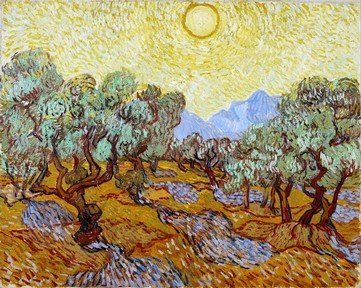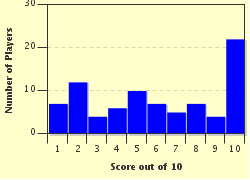Quiz Answer Key and Fun Facts
1. We open this gallery with "Diana and Actaeon", an oil on canvas from the 1550s. Here the artist captures a specific moment from the mythological story. Who is the painter, one of the most important members of the 16th-century Venetian School?
2. Our next example is "The Abduction of Europa" painted in 1632. This work is a rare foray into mythological subject matter by one of Europe's greatest ever artists. Inspired by Ovid's "Metamorphoses", the painter depicts the Phoenician gentlewoman Europa being carried away by a bull. Whose work is this?
3. A French artist next, and "Oath of the Horatii" painted in 1784. This huge painting (130x167 inches) is one of the best-known of all Neoclassical works. The work depicts a scene from a Roman legend: to end the war between Rome and Alba Longa, three brothers from each city agree to fight to the death. The painting depicts the Roman brothers saluting their father before the battle. Which artist's work is this?
4. Next we come to one of the earliest examples of historical art. Painted in the mid-15th century, it is one of three panels depicting a skirmish between the republics of Florence and Siena in 1432. This, the middle of the three panels, is a tempera on wood depiction called "Niccolò Mauruzi da Tolentino unseats Bernardino della Ciarda at the Battle of San Romano". Who is the artist?
5. By the late 18th-century there was a demand for paintings of events from contemporary history. This 1770 work, "The Death of General Wolfe", is an early example of the move away from religious and mythological scenes. The artist is which American-born artist who became the second President of the Royal Academy in London?
6. Our next work, known in English as "The Third of May 1808", was completed in 1814 and commemorates Spanish resistance to Napoleon during the 1808 occupation in the Peninsular War. The artist was the official court painter to the Spanish crown before, during and after this conflict and even painted the portrait of the pretender to the throne, Joseph Bonaparte. Which artist is this?
7. Completed in 1819, "The Raft of the Medusa" is considered one of the most important works of the French Romantic era. The painting captures the arrival of the survivors of the wreck of the eponymous naval frigate on the coast of Mauritania in 1816. Who is the young artist who painted this more than life-size masterpiece?
8. Historical paintings are often steeped in satire, as evidenced by this 1750 work, "The March of the Guards to Finchley". Here the artist depicts a fictional mustering of troops in central London as they prepare to march north to confront supporters of the 1745 Jacobean rebellion. Who is the English artist, well known for his satirical works?
9. Our next painting, "Introduction of Christianity to Poland A.D. 965", is the first in this artist's 12-part "History of Civilization in Poland" series. The collection begins in the 10th century and depicts major historical events in the country over the next 800 years. One of Poland's most famous artists, who is this painter?
10. Many of the paintings in this gallery have depicted scenes from events within the artist's lifetime, but this final example of the genre takes us back many centuries. Painted in the early 1830s, "The Last Day of Pompeii" was displayed in Rome and Paris and was the first work by a Russian artist to be so highly acclaimed overseas. At home, it was even the subject of a poem by Alexander Pushkin. Which artist painted this?
Source: Author
EnglishJedi
This quiz was reviewed by FunTrivia editor
looney_tunes before going online.
Any errors found in FunTrivia content are routinely corrected through our feedback system.

